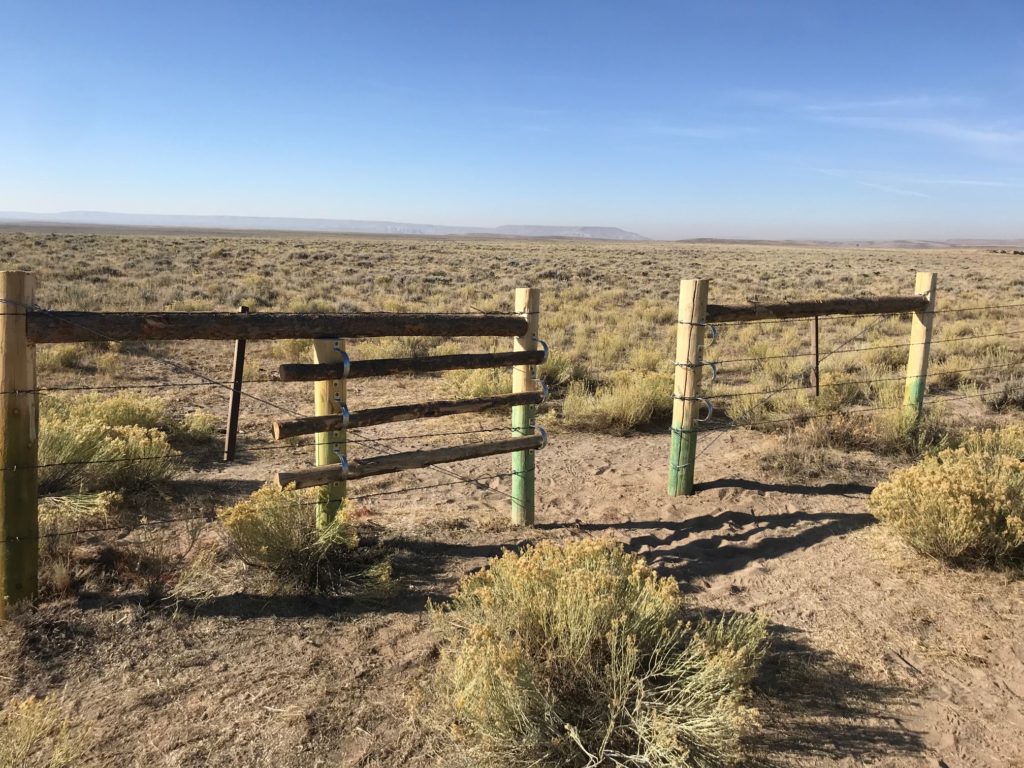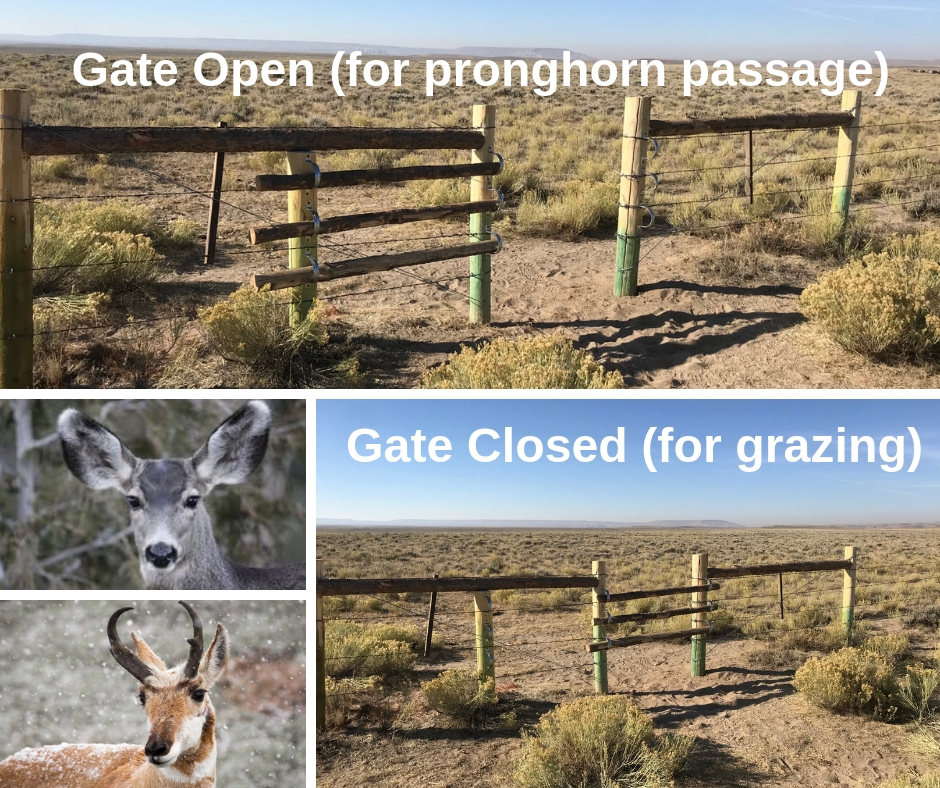Published by Kyle Kissock
Last month, I had the chance to spend National Public Lands Day representing the Jackson Hole Wildlife Foundation (JHWF) on a habitat improvement project outside of Pinedale. This project was the first in what will be a series of collaborative rangeland stewardship efforts with the Bureau of Land Management (BLM) this fall.
Our work on National Public Land’s Day was exciting because it took place directly in the “path of the pronghorn.” The path of the pronghorn is a migration corridor utilized by herds that summer in Jackson Hole and the Upper Green River Basin to reach wintering ranges farther south. This corridor runs through the heart of the famous local natural gas field, the Pinedale Anticline. Hardly visible from the road, if you drive west off of Highway 89 south of the East Fork River crossing, you’ll find yourself squarely in the middle of the Anticline’s industrial infrastructure. This area is also leased for cattle grazing, and as such, endless miles of barbed-wire fence run between drill sites in what is extremely important habitat for pronghorn in transit.
Our objective was to modify this barbed wire by installing passage gates which will allow pronghorn to move through the fence while keeping cattle inside. Because pronghorn prefer to travel under rather than over fences, these passages enable pronghorn to move through a fence upright, without having to wriggle under a hazardous low wire. Locations chosen for gates were deliberately selected by biologists at the intersection of the fence lines and well-traveled pronghorn trails. The trails were surprisingly well defined by scat and tracks, and were remarkably discernible carved into the fine-grained dirt. You can even see one in the picture passing through the gate; I thought they were really neat natural features that confirmed just how often (and how many) animals move through the area.

The volunteer team successfully installed 16 pronghorn passages over the course of the day. The most common variety of passage was composed of three, removable wooden posts tiered horizontally across an opening in a fence line. The posts can be manually offset from the gate to allow pronghorn passage through the fence, and just as easily be slid back in place if cattle were grazing in the area. We also installed several “slip gates,” which were a series of three to four wooden posts driven vertically into the ground at no more than 16 inches apart. The narrowly were spaced wide enough to allow a pronghorn to shimmy through, while keeping stock on the desired side. The advantage of slip gates is once installed, posts don’t need to be slid into and out of position as they are staked permanently into the ground.
Time will tell if pronghorn take to either of the gates, but we have reason for optimism. At one point in the afternoon, less than ten minutes after we installed a passage, we looked back from several hundred yards away to see several pronghorn had just crossed the fence line at the new passage site. Had they used the slip gate, or did they successfully navigate their way under the barbed wire? BLM hopes to document usage of these passages on camera, so stay tuned! In the mean-time, we’ll look forward to opportunities to keep expanding our work into neighboring communities.

